The Loop reusable packaging concept, which started as an ecommerce shopping platform, continues its quest to an in-store retail model with its launch in select US stores.
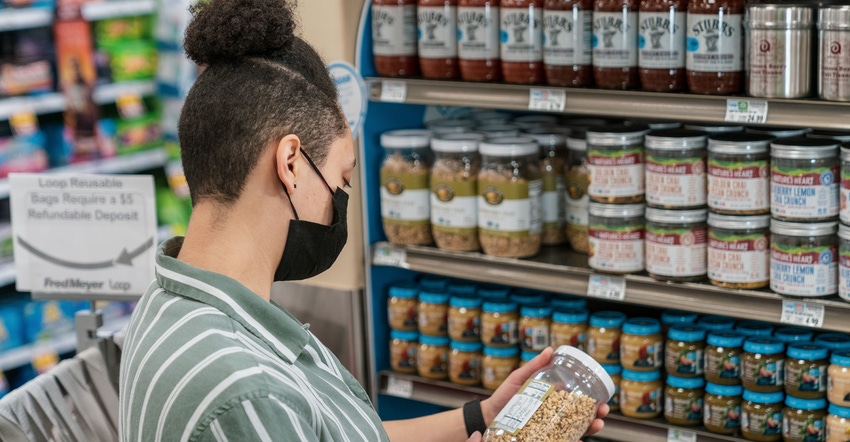
The Loop reusable packaging platform achieved another milestone yesterday with its US in-store launch. As of Wednesday, February 23, 2022, consumers can now buy more than 20 different branded products in special Loop reusable packages at 25 Fred Meyer stores in the Portland, Oregon, metro area — including two stock-keeping units (SKUs) of the Kroger brand Simple Truth.
This US retail store debut follows other successful entries, first with Carrefour locations in Paris, France, in December 2020, then in Japan at AEON stores in May 2021, and lastly in UK Tesco retailers in September 2021. At the institutional level, Loop also has reusable packaging partnerships in select restaurants with Burger King in the US (May 2021), McDonald’s in the United Kingdom (July 2021), and Tim Hortons in Canada (October 2021).
A portion of this video (0:28-1:25) shows the in-store Loop display and how packages are bought and returned to a collection bin located in lobbies of the Fred Meyer stores.
In this Packaging Possibilities podcast with (separately) Lisa Zwack, Kroger’s Head of Sustainability, and Tom Szaky, CEO of TerraCycle, the parent of Loop, we learn:
• why the packages need a new design;
• how the in-store process differs from the Loop ecommerce process;
• where the packages will be cleaned now and in the future;
• what the next steps are.
PACKAGING POSSIBILITIES - Season 2: Episode 3
If you have a topic you’d like to propose for a future PACKAGING POSSIBILITIES episode, please email Lisa Pierce at [email protected].
TRANSCRIPT IS AUTO GENERATED
Lisa McTigue Pierce
Hello! This is Lisa Pierce, Executive Editor of Packaging Digest, with a special edition of Packaging Possibilities, a podcast that reveals what’s new and what’s next for packaging executives and engineers, designers and developers.
In this episode, I talk with Lisa Zwack, Kroger’s Head of Sustainability, and Tom Szaky, CEO of TerraCycle, the parent of Loop, about yesterday’s US in-store launch. As of Wednesday, February 23, 2022, consumers can now buy more than 20 different branded products in special Loop reusable packages at 25 Fred Meyer stores in the Portland, Oregon, metro area.
First, we hear from Tom about some of the details.
Tom, why did you decide to launch this in Portland OR the metro area there?
Tom Szaky (guest)
It’s a really good question and, you know, it really was more serendipitous than conscious. When we launched Loop and brought it about — gosh, now maybe three years ago — a number of lawmakers in Portland reached out to both us and the team at Kroger/Fred Meyer asking to prioritize Portland as the city to bring Loop to. That led both of us to get very excited about it — both of us being, you know, the retailer, Fred Meyer and Kroger, and Loop to get excited about.
And that’s why we prioritize Portland as the as the first city. Of course, if this succeeds, the goal is to bring it as a national solution. But that’s how Portland was first chosen.
Lisa McTigue Pierce
OK, it makes total sense to, especially because Portland is one of the hotbeds for sustainability. So that makes total sense.
And I know that in the Portland metro area, this is going to launch in 25 metro stores overall in the Portland area. There are about 50 Fred Meyer stores. How did you guys decide on the 25 that are going to be in the initial launch?
Tom Szaky (guest)
The store list of the 25 Fred Meyer stores was really looking, I believe, at the larger stores in the main part of Portland. But the store list was chosen by the Fred Meyer team.
Lisa McTigue Pierce
OK, excellent. I’ll have an opportunity to talk with Lisa as well. The head of sustainability there.
Tom Szaky (guest)
Yeah. Lisa will be able to, I think, yeah, absolutely. And she’ll be able to much better answer that question. You know to be very fair that is that is mostly was their decision and you know they know their stores the best.
Lisa McTigue Pierce
OK, I’m also going to ask about how to decide which products to carry in those stores, which I think both you and Lisa can answer. But I guess maybe one of the questions for you is, are the It looks from the video and the photos that they’re all shelf stable products. Are there any refrigerated or frozen?
Tom Szaky (guest)
Right now, all of the products in the Fred Meyer launch are ambient — so shelf stable and no temperature classes. With that said, you know in Loop in general, there are chilled and frozen products. But they’re just starting at the moment in ambient.
And just to give a little sense of the products … so Loop, you know, as a platform, brands can join and then we work with them to enable Loop-compliant products. Then those are presented to the retailers and then the retailers are the ones who pick from those what will go on their shelf.
Lisa McTigue Pierce
OK, excellent. And that makes sense because they’re the ones who know the makeup of the community better than anybody. So excellent. OK.
So in looking … watching the video — which is very well done — it shows that there’s a reusable carrying bag very close to the shelf units. And I’m calling it a unit because it looks like it’s four sides. People can walk around this entire thing to look at all the products?

Tom Szaky (guest)
It depends on the store, right? So some of them are end caps, some of them are different units. And yes, there’s absolutely a return bag that you can optionally choose if you wish.
Lisa McTigue Pierce
OK. And is the idea to help the consumer keep those Loop products separate so that they remember which ones are Loop products? Or how is it that they’re going to remember that these are Loop products that need to be returned back?
Tom Szaky (guest)
Oh, very good question. Yeah. So, two sort of answers, if I may. So every Loop product is labeled saying it’s a Loop product. So somewhere on the product that explains that it’s a Loop-compliant product and you can return it for a deposit. So the brands are highlighting that this is a Loop-compliant product both by, you know, communicating directly on package that it is, as well as the package itself may be obviously different, you know, made from safe stainless steel instead of plastic. So they look at the pack should inspire that. It’s that it’s different. And then it clearly states on every package that it is a Loop product, you know, in copy.
And if I may just to go back to the bag … right, the idea of the bag is that you can either return one Loop product at a time in the bin, if you wish, or you can throw them all in the bag and then return the bag. So it’s sort of like, we want it to feel like literally throwing something in the recycling bin or the garbage. And then you can reach, you know, you can drop off the entire bag. So let’s say you had 10 items. If you have 10 items, you probably would elect to have the bag, the bag costs nothing to you. That’s absolutely free. You just pay a $5 deposit. Yep. So zero costs. But there is a $5 deposit.
Lisa McTigue Pierce
OK.
Tom Szaky (guest)
You throw all your products in there and then you can throw the entire bag into the Loop bin without having to check every product in individually and you get your $5 back on the bag. And, of course, the deposits back on every item that was in the bag.
Lisa McTigue Pierce
So walk us through this return process for the consumer because … there are deposits on all the packages still, correct?
Tom Szaky (guest)
Yes. That’s exactly right. Yes, there is a unique deposit on every package. That’s always a standard in Loop.
So what happens is, you go to the shelf, you buy whatever you wish. The deposits are clearly marked, you know. And they range, depending on what you’re getting, noting that if you were to buy that package empty, saying another part of the store, you’d probably pay three times more for it than the deposit is. So they’re, you know, really well-priced deposits.
And then when you’re done, you have an empty, dirty container. We really emphasize. Don’t wash it because we’re going to have to wash it anyway. So there’s no purpose to wash it at home.
Lisa McTigue Pierce
Right.
Tom Szaky (guest)
You can then either go and drop off one container at a time, or as you can take the return bag, which again is free other than a $5 deposit and you can put them all in the bag. Now let’s say you come to the bin with two containers, right? No bag. Then you would scan each container in the Loop app, drop them in the bin, and then, as soon as we pick up the containers, the money is credited to your app.
And then you can transfer that at no cost to any bank account or PayPal, if you wish.
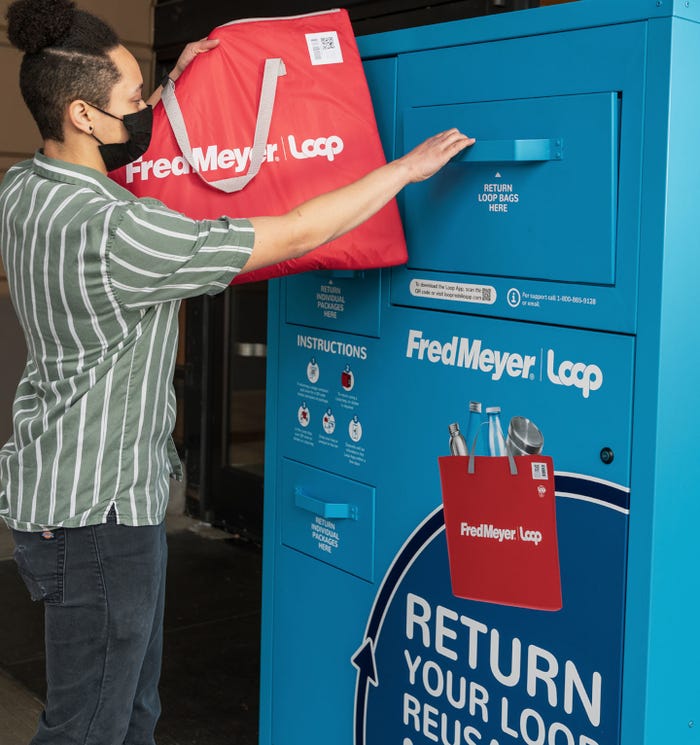
Then, if you did it with the bag … Let��’s say you have 20 products in the bag. You just scan the bag into the Loop app. And then a drop that in. And then we will open the bag and everything inside will be credited to your account and then you can again a transfer that to your bank account or through PayPal.
Lisa McTigue Pierce
So each bag has its own unique number or some kind of a code. I’m guessing it’s a code because you’re saying scan. OK, so yep. OK. Excellent. And so this … the QR codes that are also on the individual packages, they are also QR codes?
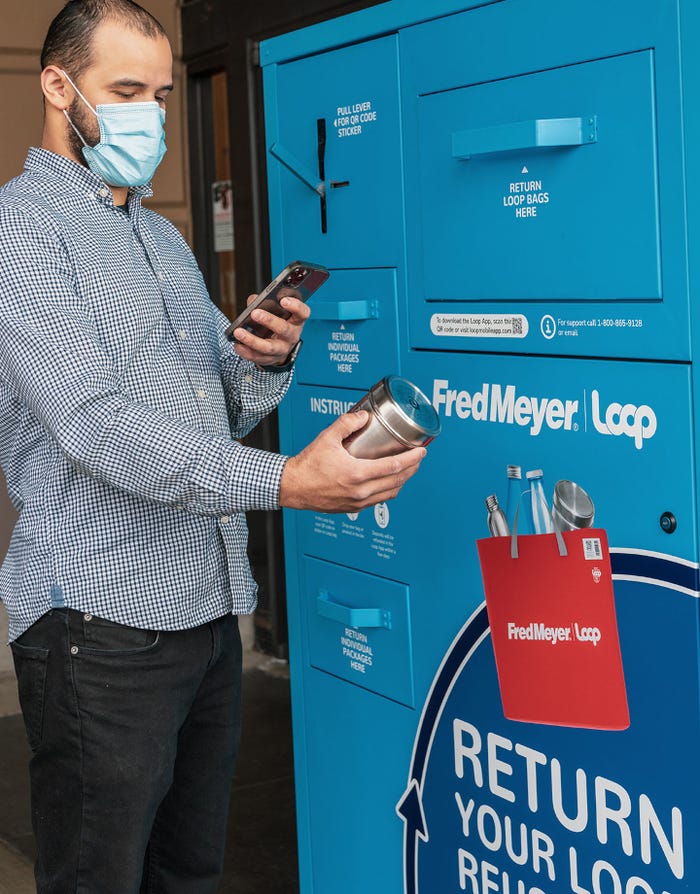
Tom Szaky (guest)
Yes, that’s exactly right. It’s a QR code. Oh yeah, on the packages, some may have QR codes printed on them. If they don’t, the return bin dispenses unique QR codes that you just take off the sticker and put onto the package.
Lisa McTigue Pierce
OK, excellent. I did see in the video a gentleman getting one of those printed-out QR codes and putting it on. So OK.
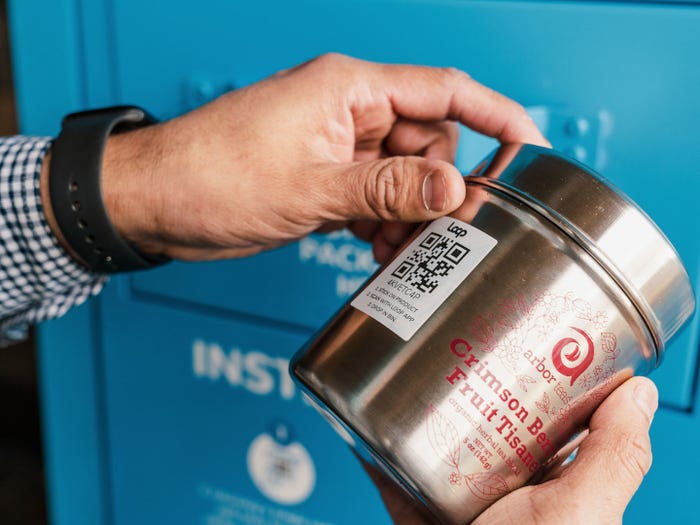
Tom Szaky (guest)
Yeah, that’s right. So the bin dispenses those and that’s done because for some brands you can imagine it’s extremely expensive to put unique printing on every pack. And so we let the bin do that. If the brand is not able to do so.
Lisa McTigue Pierce
OK, I did want to ask you about that too, Tom, because I know that for the design of most of these packages, products in the initial ecommerce … this method of sales that you didn’t need a UPC code, you didn’t need to have a lot of the sell copy or the informative copy that you usually have on a package on shelf. So these designs were, you know, very simple, very, you know, bare bones … basic.
Tom Szaky (guest)
Yes, that’s all correct, yes, yeah.
Lisa McTigue Pierce
So I was just wondering how all that would work in-store.
Tom Szaky (guest)
Oh, in, in. It’s a very good question. So in the in-store packages, all of the copy has to be there that we were able to remove in the online model.
Lisa McTigue Pierce
OK.
Tom Szaky (guest)
Like UPC codes, warnings … you know, they’ll … all the whole kit has to be there.
Lisa McTigue Pierce
Sure. I can see how that can definitely change the graphics for the products in the CPG companies, yeah.
Tom Szaky (guest)
Call it like … all the brands have to do what you would call store-friendly graphics.
Lisa McTigue Pierce
Uh-huh. Yep. OK, excellent. Alright. So let’s talk a little bit about the … and just moving on to … like I’m trying to follow the logic of how all this works. So the consumer uses the product at home; it’s empty; they bring it back to the store either singles or in the bag. If it’s in the bag, I can see that the products inside are somewhat protected as they are placed into the bin.
Tom Szaky (guest)
Yes.
Lisa McTigue Pierce
But the individual packages … it looks like they, you know, kind of tumble into the, into this bin, yeah.
Tom Szaky (guest)
What’s interesting is the bins are really specially engineered to do what we call a soft landing on the inside. So the bins are not a big drop if you will … like, just the bin, the inside is actually quite technically complex to create what one would call a soft landing.
Lisa McTigue Pierce
OK.
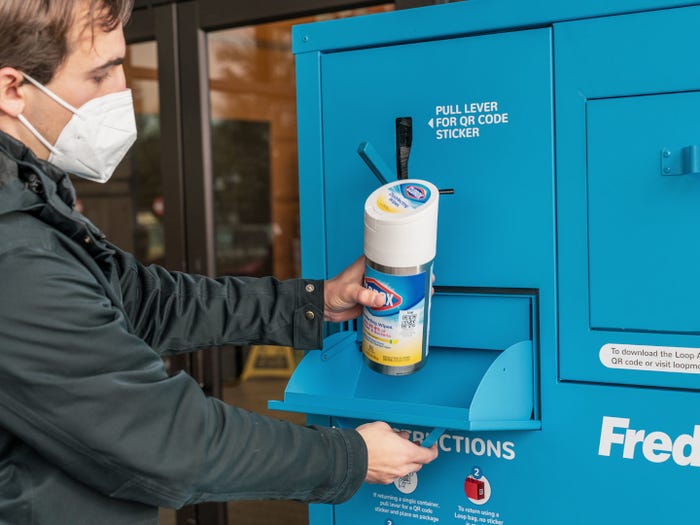
Tom Szaky (guest)
So in all the models where we’ve deployed this and been running it now, you know, like in Europe and Japan for over a year, the amount of breakage is incredibly low, like negligible below 1%.
Lisa McTigue Pierce
OK, yeah, as well as, like, little damage to the aesthetics of a package?
Tom Szaky (guest)
Oh yeah, yeah, yeah. Well, so aesthetic damage. We don’t measure aesthetic damage. But mechanical damage, we do measure. So that could be a nick, it could be like a deep scratch, it could be a full break — that’s what’s been below 1%.
Lisa McTigue Pierce
Below 1%? That’s awesome.
Tom Szaky (guest)
Yeah, it’s really good. And by the way, return rates are stabilizing at 80% in all the markets where we’ve been up and running for a little while and in store.
Lisa McTigue Pierce
OK, I did want to ask you. You did do this, as you had said, overseas for more than a year. So you have this in-store concept already working and — should I even use the word? — proven.
Tom Szaky (guest)
I would say yes. Yes. I mean, all those retailers just to sort of reinforce that point or … All at this point are now scaling their store count significantly.
Lisa McTigue Pierce
OK, that is a good sign. I was gonna ask … What else did you maybe learn from those other in-store tests or, you know, just operations that maybe helped the folks at Kroger in launching it here in the United States?
Tom Szaky (guest)
I would say two things really came clear in the in-store launches that we’ve already had in the UK, France, and Japan, which is the consumer proposition we view as proven. So that consumers like it. They buy it, they switch brands into it, and then they repeat, right? Because it’s not just important that people try, but it’s important that they repeat and finally that they return.
All those metrics are coming back really strong. And when they are being … when we get new learnings, like brands doing their own insights or new data from retailers … always just reinforcing those existing learnings, which is really nice to see. So that part we feel very proven on. Now, of course, we have to replicate in the US. But everyone is feeling very confident and I think gave Kroger a lot of confidence and the brands in the USA, a lot of confidence.
The other part that I’d say is validated is that operationally it’s working. The bins are working as we just discussed. There’s, you know … the damage rate is really good, the return rates are really good. They’re being serviced. The deposit mechanism is working. They’re being cleaned and refilled.
So all of that complex waste management function of reuse, it’s functioning very well. That leads us really just one thing left to focus on. The biggest of course, which is … how fast can we scale this so that it becomes economically competitive with disposability.
Lisa McTigue Pierce
OK. I do have one other, what I think is a pretty big question on this, so.
Tom Szaky (guest)
Please.
Lisa McTigue Pierce
According to the press release that you guys issued today, which is launch day — this is Wednesday, February 23rd, 2022 — that you’re going to be … Loop is going to be picking up the empty containers from these Fred Meyer bins at the stores and taking it through the rest of the, dare I say loop of the whole process, and that’s for cleaning, returning to the brands, and then refilling and having another life.
Tom Szaky (guest)
Yes.
Lisa McTigue Pierce
So from what I remember — and there may have been a change since the last time we talked or the last time I looked into this — all of your cleaning facility was on the East Coast, in, was it New Jersey? Is it, is that still the case?
Tom Szaky (guest)
Yeah. That is correct. That’s right.
At today’s scale, yes, yes. So today, you’re absolutely precise in that we are running this in Portland and then, in bulk, moving the material to New Jersey for sortation and cleaning. That’s absolutely correct. It’s important to note that, you know, our plans for infrastructure scale are that — probably in the next, say, two to three years — we plan to have five total cleaning and sorting facilities in the USA. I think Northwest, Southwest, Northeast, Southeast, and right smack dab in the middle, say like in Arkansas for example. And that’s what we will end up building out. But because these are sophisticated and expensive, the location … we wanted to make sure we succeed on this deployment as a pilot. And as soon as then Kroger is ready to scale is when we’re going to start building out the West Coast cleaning site. So, this is more about timing of pilot than, you know, what our long-term intent is.
Lisa McTigue Pierce
OK, excellent. Because I know a lot of people are concerned about that overall footprint.
Tom Szaky (guest)
Oh no, no. And it’s fair. it Look, it’s in pilots many times. You know, you may have sort of an optimal part of the supply chain. This isn’t optimal … So I would fully agree and it’s really intended to be temporary.
Lisa McTigue Pierce
OK, wonderful.
So Tom, I guess one other question that I have, just as a point of trying to understand a little bit, the initial ecommerce is morphing into this in-store concept. According to your website, it looks like, in the US, we now have this launch in the Portland metro area for Kroger, Fred Meyer. There’s also plans for — soon in early 2022 — Walgreens to also have in store.
Tom Szaky (guest)
Correct.
Lisa McTigue Pierce
Or … and then we still have the ecommerce for Ulta Beauty. Only the beauty products are going to be ecommerce?
Tom Szaky (guest)
No. No. So … during the question … So yes, the two public retailers are Walgreens and Kroger, Kroger being today and Walgreens coming up.
Tom Szaky (guest)
There are two other major retailers we will be announcing, I think in the next 60 days to 90 days: one big mass market retailer and another big grocer will be announced. I will, of course, let you know when that’s public. So there will also be a … one will do an ecommerce launch. The other is doing an in-store launch.
And with Ulta beauty. Right now we are working on transitioning from the ecomm pilot into the in-store launch. Once we have figured out the details, we’ll be announcing exactly what that looks like.
Lisa McTigue Pierce
OK, excellent. The only reason why I ask is I think that there are a lot of people who may have been using the ecommerce because they’re, you know, in an area where they can get the products that way — that, you know, currently don’t have the in store. So I wasn’t sure if there was going to be an overlap between those two. Is the plan to eventually weed out the ecommerce sales or is it always going to be both?
Tom Szaky (guest)
Oh, certainly. No, no, no. It’s a very good question.
So the … what we are transitioning out of is what we call standalone ecommerce, the ecommerce that Loop manages top to bottom, and the retailer is sending consumers to loopstore.com. And what we’re transitioning into now, that you know we’ve proven, what we need to do with those standalone ecommerce — standalone means standalones from the retailers’ infrastructure is where the retailers …
Lisa McTigue Pierce
Yes.
Tom Szaky (guest)
Over and some retailers are starting in store like Kroger. Some like that mass market retail will be uh announcing in in a few months. It’s starting ecomm and then summer starting votes.
But it’s … the key transition is the retailers really taking on the role of being a retailer.
Lisa McTigue Pierce
Yes. OK. Excellent. I get it.
Tom Szaky (guest)
Right. And we normalize our role as just the waste management function of reuse, and are not doing any retailer functions, which we had to do during the ecomm pilot things.
Lisa McTigue Pierce
Totally understand. Yep. OK. So in this … there’s, believe it or not, a third distribution system that over the last couple of years has emerged and blossomed; and that’s the direct-to-consumer delivery from the retailers. And I would imagine that [would be available] through the retailer site …
Tom Szaky (guest)
Yes.
Lisa McTigue Pierce
… either Fred Meyer and Walgreens to start, but future retailers as well will have that as an option in their own web app.
Tom Szaky (guest)
Yes, exactly right. So you nailed it, right?
Take a retailer like Fred Meyer. They’re starting in store, but it’s very likely that they would look at adding, you know, something like click-and-collect or the direct-from-store, like store pick ecomm.
Lisa McTigue Pierce
OK.
Tom Szaky (guest)
So it’s very likely that you that you may see something like that.
Lisa McTigue Pierce
OK, excellent. And you’ve already made it easy for them by having a carry bag …
Tom Szaky (guest)
Yes.
Lisa McTigue Pierce
… right there, ready for them to do the pick and the delivery.
Tom Szaky (guest)
Exactly. You got it. And there’s a little preview. Even though I can’t say the retailers name, the mass market retailer that we’re going to be announcing in a few months, they’re going to start with the store-pick direct-to-consumer delivery model.
Lisa McTigue Pierce
OK, excellent. Well.
Tom Szaky (guest)
They will deliver and they pick up the empties. This is, again, the key for Loop as a platform … is we are the platform for reuse and then our operational role is really the waste management function of reuse. We are not the manufacturer and we’re not the retailer. In the loopstore.com early version when we first spoke about it, that was sort of like the learning platform there. We did make some products, some of the private-label products, just to fill out the assortment. We also did the outbound distribution temporarily until the retailers gained enough confidence to take it over themselves.
Lisa McTigue Pierce
OK. Well, thanks to the pandemic, we have two years now of experience for the retailers and doing direct-to-consumer delivery. It’s amazing how fast — you know, the mother of necessity — at how fast they’ve been able to rise to the challenge there.
Tom Szaky (guest)
Yes, yes. Tell me about it, yeah.
Tom Szaky (guest)
Well, it helps us a lot because that sort of model is really what Loop needs to work in an ecomm setting. And so it’s really quite wonderful that they did that.
Lisa McTigue Pierce
Yes, I also agree it was very serendipitous for you, for Loop. Yes.
Tom Szaky (guest)
Yes, it was. It really worked out. Yeah, absolutely.
Lisa McTigue Pierce
OK, excellent.
Lisa McTigue Pierce
That was our conversation with Tom Szaky, Loop’s CEO. We also had an opportunity to talk with Lisa Zwack, Kroger’s Head of Sustainability, to get the retailer’s perspective and insight.
Lisa, how did Kroger decide which Fred Meyer stores in the Portland metro area to incorporate this Loop … the reusable packages from Loop.
Lisa Zwack (guest)
Well, I’m … overall we were very excited to pilot this Loop concept in the Portland area and in our Fred Meyer division. When it came to selecting stores, we wanted to keep it sort of geographically focused, in part because that does help the model operating more seamlessly as well. So when the Loop team is servicing the collection bins and, you know, making sure that we’re … everything is running smoothly, that is more efficient for them. When they’re working in a somewhat of a, you know, like a defined scope, if you will, geographically. And then we had decided we wanted to work with around 25 stores just to get enough data points to find, you know, meaningful insights from the kind of test-and-learn phase of this of this partnership and the go live in stores. And so as you know, Fred Meyer division really helped us identify the stores that kind of met. Those that criteria in the greater Portland area.
Lisa McTigue Pierce
OK, excellent. And I understand that there are more than 20 brands that are participating with products in this display area as well as Kroger’s Simple Truth. Can you talk a little bit about that, how you decided to with your private brand, how you decide it’s store brand, how you decided to also participate?
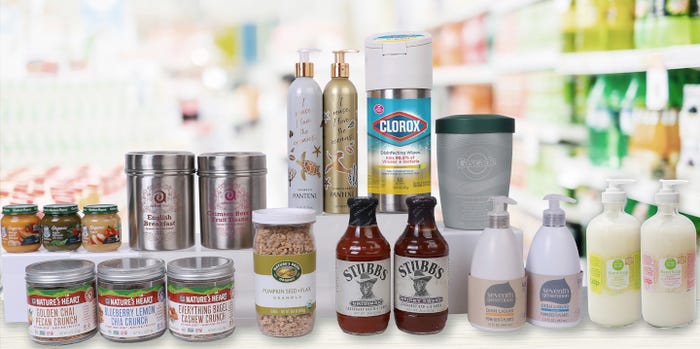
Lisa Zwack (guest)
Yes, well, you know, we are very proud of our private label products. We know they are very popular with our customers. And so when we were launching the Loop pilot and … sorry the partnership … we wanted to make sure that we had the our own private label represented as well so that they could also, you know, learn through the experience. Also, Kroger has sustainable packaging goals that pertain to our private label product specifically. One of those goals is that we will achieve 100% recyclable, reusable, or compostable packaging by 2030 for the private-label products. So this was a great opportunity for our private label, too, to try on that reusable concept.
Lisa McTigue Pierce
OK. Do you mind telling me what private-label products are participating in this? Is it, like, just a couple of SKUs or?
Lisa Zwack (guest)
Yes, we have two SKUs in the assortment. They are a hand soap product in two different scents of that that hand soap.
Lisa McTigue Pierce
OK, excellent. Thank you for the detail on that.
So you mentioned about the collection bins already and I was a little curious on whether these bins are inside the store or outside the store. Obviously, it’s got to be somewhere where the folks who are buying these products are pretty comfortable with returning the empties when they come back.
Lisa Zwack (guest)
Correct, yes, they are outside this door, but they’re in the lobbies of the store is where they will be located. And so that makes it convenient for customers to return the empty packages when you know they would like to; and also for the Loop team to service the bin when the time comes to do that.
Lisa McTigue Pierce
OK, excellent. Makes total sense. So Tom explained to me that one of the things that’s a little bit different about these particular packages as opposed to the ecommerce version of them is that these are required to have the full retail information on the packaging, which is, you know, quite different from just, you know, a kind of like a beauty shot that they, you know, the beauty aesthetic that they used to have. And so the UPC code also is on there. And that’s when it’s scanned in store, the deposit is all, it’s all like automatic with that correct?
Lisa Zwack (guest)
Correct. Yeah, that is something that we set up that was, you know, different in the, you know, brick-and-mortar version of the Loop offering versus the ecomm as you described. So yes, we do have the, you know, a typical consumer UPC code that can be scanned at register. And when the customer or the, you know, the cashier scans out the product, it will show both the price — like the actual based products — and then also the deposit shows as a separate line item on the receipt, so it’s easier for the consumer to understand the two things that they’re paying for.
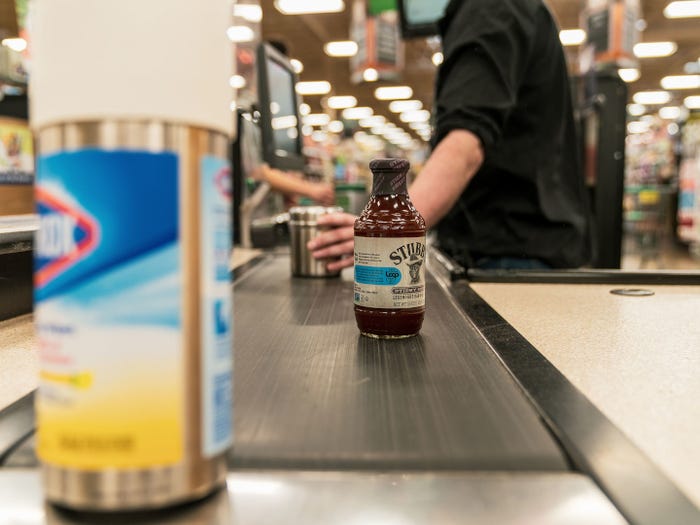
Lisa McTigue Pierce
OK. And the carrying bag is, you know, specific to the Loop products, but I’m wondering if our people in the store are going to understand that. I know it’s … the bag is right there with the display. OK, alright.
Lisa Zwack (guest)
Yes. That is the intention that they will, you know … they will understand that it’s specific to the Loop pilot. It’s not to say that they couldn’t, you know, take it or purchase it and use it for something else. But it is designed for that and with the intention of being of it being a convenient way to return, you know. If they have multiple empty packages to return at once, they can do that in the bag.
Lisa McTigue Pierce
Yep, thanks for explaining that. Thank you. So I guess one of the things, one of the other questions that I have then about that is … Tom had mentioned that the display can look a little bit different within the 25 stores that you’re launching this at — that some might just be an end cap and some might be, you know, a full walkaround four-sided display. How do you decide which store gets which kind of display?
Lisa Zwack (guest)
The type of display is a big determined by the store and where we would be placing that. So that I think it’s just determined by the merchandising team and the in-store and the retail teams in terms of what makes sense for that store.
Lisa McTigue Pierce
OK, excellent.
Lisa, those were all the questions that I had. Is there anything that I haven’t thought to ask that you feel compelled to tell me?
Lisa Zwack (guest)
Yeah, I mean, I just, I’ll just summarize by saying that we’re really excited to be, you know, launching this in store activation for our customers. You know, we as I mentioned before, we have our own sustainable packaging goals. So this is certainly aligned with the direction that we’re headed in. We also have our zero hunger, zero waste social and environmental impact plan and the reusable packaging concept also aligns very well with that in our overall kind of zero-waste vision.
And so we’re just overall thrilled to be offering this kind of innovative and you know more sustainable solution to our customers in the Fred Meyer division.
Lisa McTigue Pierce
Excellent. I know that over the years, it seems like a lot of the focus from a sustainable packaging point of view, has been on recycling.
Lisa Zwack (guest)
Uh-huh.
Lisa McTigue Pierce
You know, [it] makes sense. That’s one of the actions that a consumer can do to make them feel like they’re participating in this whole sustainability movement. But there are a lot of different options and reusable packaging is just one of them. So it’s kind of good to see a little bit of the mix.
About the Author(s)
You May Also Like




